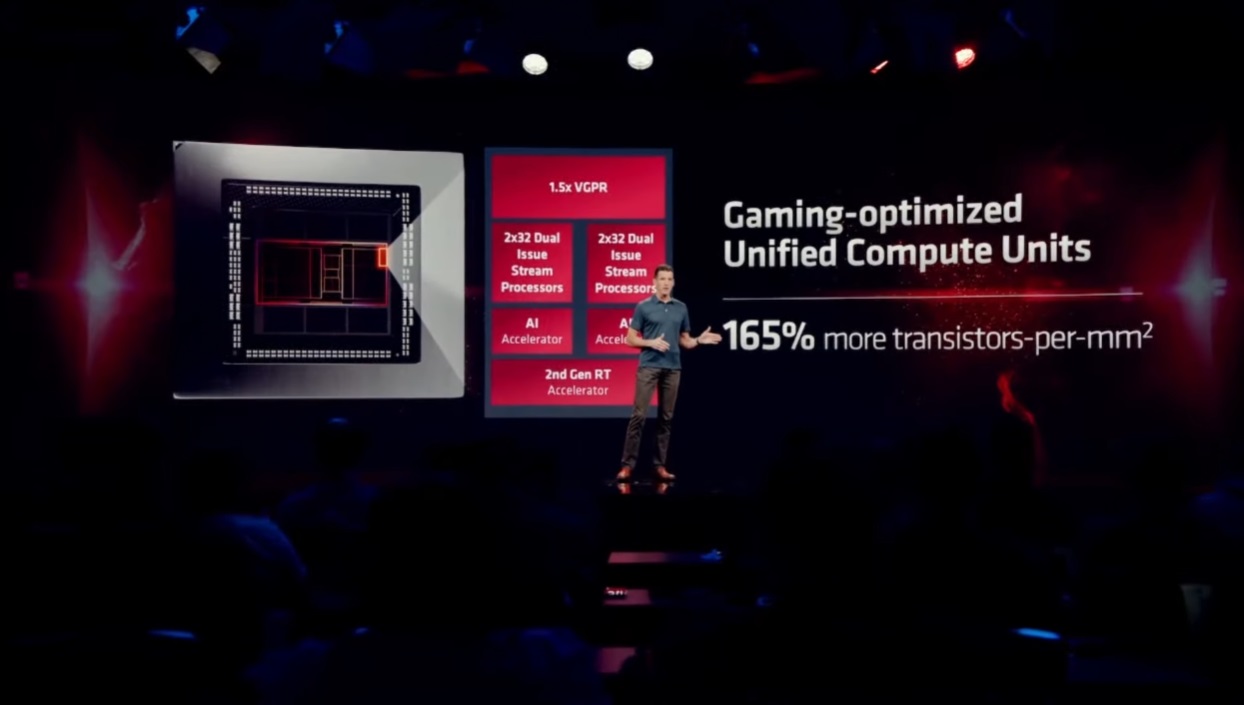The PS5 Pro’s GPU will have a configuration according to the latest information we’ve seen 3840 shaders, and will be based on RDNA Architecture 3although it is rumored that it could have some RDNA 4 exclusive features to improve support for new technologies that could make a difference in current games.
With this data in mind, when considering the possible equivalence that the PS5 Pro GPU would have, it is clear that the closest would be Radeon RX 7800 XT If we get carried away with the number of shaders, since this one too has 3840 shaders and uses the RDNA 3 architecture. However, we have to take into account something very important, which is In terms of raw performance, the PS5 Pro’s GPU will be equivalent to an inferior model.
This has a very simple explanation, which is that ultimately neither the number of shaders nor the maximum TFLOPs in FP32 is an exponent or direct equivalent of gaming performance. There are many other things we need to consider In this sense, and so that you have no doubts about it, I will explain it to you below in a simple and understandable way.
Why the PS5 Pro GPU won’t perform like a Radeon RX 7800 XT

The answer is very simple, because we are talking about the console that will have GPU integrated into the same silicon chip where the CPU will goand therefore we cannot assimilate it to a dedicated GPU with its own PCB, its own cooling system and power system that allows it to access up to 263 watts of consumption.
The graphics core that the PS5 Pro will mount will have to share space at the silicon level with the CPU, which means that It will not have an infinite cache, or else it will contain a very small amount and run at a much lower operating frequency than the Radeon RX 7800 XT because will not be able to achieve the same level of consumption.
To help you understand this better, I can give you an example of a PS5 GPU and its shader equivalent, Radeon RX 6700. The other has a GPU that is taking up 335 mm2its TBP is 175 watts, it has 80 MB infinite cache (L3) and its GPU is close to 2.6 GHz. The PS5 GPU occupies 308 mm2 with its CPU, has a shared TBP between the CPU and graphics of 175 watts, missing infinite cache and its maximum peak frequency is 2.23 GHz.
As a result, in the end, the PS5 GPU offers a performance halfway between the Radeon RX 6600 and the Radeon RX 6600 XT in the best cases, and always talks about rasterization. All things considered, I think eventually The actual GPU performance of PS5 Pro will be between Radeon RX 6700 XT and Radeon RX 7700 XT.
What difference will it make in games?

Alan Wake 2 setup on PS5, courtesy of Digital Foundry
It’s a good question, and the truth is, it’s not an easy one to answer. Generally speaking, the PS5 Pro GPU will better prepared to work with more demanding games because it will be more powerful, but it will still have the main shortcomings that we saw with the PS5 GPU, such as the absence of L3 cache, or in its case the presence of a very small amount, as well as a limitation in consumption level that will limit the maximum working frequency.
The PS5 Pro will be able to move games at a higher resolution, but titles based on Unreal Engine 5 will still look great in 4K if the console does not resort to scaling. I am absolutely convinced of this and that the intelligent rescaling technology that Sony will use will be key to the console being able to achieve such a resolution in really demanding games.
Consider that the PS5 has serious issues with titles like Alan Wake 2 running at that resolution 1270p upscaled to 4K with medium high quality and 30 FPSand that others like Lords of the Fallen work even worse because he moves in Dynamic 1152p with drop to 648p. With these numbers, it makes no sense to think that the PS5 Pro will be a true 4K console, nor that it will be able to tame Unreal Engine 5.
To enjoy a proper jump we’ll have to wait for PS6a console that will come with a deeper renovation at the hardware level and which will apparently be much more powerful than the PS5 and PS5 Pro. I understand that Sony could continue to use APUs for simplicity and cost, but I think it will come back eventually separate CPU and GPU settings would have a very positive impact on raw performance of your future console and throughout its lifetime.















